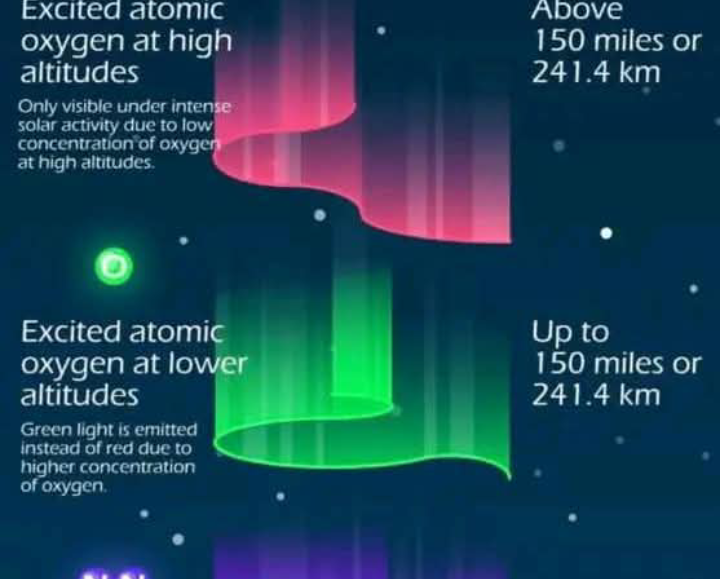
Northern Lights Alert: Understanding the Phenomenon, Weather, and Temperature Factors…
The Northern Lights, or Aurora Borealis, are one of the most captivating natural phenomena on Earth. Displaying vivid green, red, purple, and occasionally even blue hues across the night sky, these dazzling lights have fascinated people for centuries. While many know of the Northern Lights, few understand the intricate interplay of weather, temperature, and solar activity that gives rise to this breathtaking spectacle. In this article, we will explore what causes the Northern Lights, the weather and temperature conditions that influence their appearance, and how scientists track and predict their occurrence through “Northern Lights Alerts.”
What Are the Northern Lights?
The Northern Lights are a natural light display predominantly visible in high-latitude regions near the Arctic Circle. They are caused by interactions between charged particles from the sun and the Earth’s magnetic field. This process is known as the auroral phenomenon.
When solar wind (a stream of charged particles from the sun) reaches Earth, it can cause disturbances in the Earth’s magnetosphere. These charged particles, mainly electrons and protons, are funneled toward the poles by the Earth’s magnetic field. As they collide with gases in Earth’s atmosphere, particularly oxygen and nitrogen, they release energy in the form of light. The color of the light depends on which gas is being excited by the charged particles. Oxygen emits green and red light, while nitrogen contributes purple, blue, and pink hues.
While the Northern Lights are most commonly associated with the Arctic, they can also be seen in the Southern Hemisphere, where they are called the Southern Lights or Aurora Australis. However, the Northern Lights are far more frequently observed, with regions such as Norway, Sweden, Finland, Canada, Alaska, and Russia being prime viewing spots.
Solar Activity and the Northern Lights
The intensity of the Northern Lights is heavily influenced by the level of solar activity. The sun undergoes an 11-year cycle of solar maximum and solar minimum. During periods of solar maximum, the sun is more active, emitting a higher volume of solar flares and coronal mass ejections (CMEs). These bursts of charged particles can trigger more spectacular auroral displays. Conversely, during solar minimum, when solar activity is low, the Northern Lights tend to be less frequent and less intense.
Scientists monitor solar activity closely because it plays a significant role in predicting when the Northern Lights will appear. Solar flares and CMEs, often accompanied by geomagnetic storms, can cause the Northern Lights to become more visible even in areas where they are not typically observed. For example, during intense solar activity, the Northern Lights may be visible at latitudes as low as 40 degrees north, which includes places like New York or Madrid.
Weather and Temperature Factors
While solar activity and geomagnetic storms play the primary role in determining when and where the Northern Lights occur, weather and temperature are also important factors to consider when planning an aurora-viewing trip.
1. Clear Skies Are Essential
The most important weather factor for viewing the Northern Lights is cloud cover. Since the aurora is a visual phenomenon, having a clear or partly cloudy sky is essential for seeing the lights. If the sky is overcast, the aurora may still be occurring, but it will be obscured by the clouds. Thus, one of the first things to check when you’re planning to view the Northern Lights is the local weather forecast. You will need to be in a location where the skies are forecasted to be clear, ideally with minimal light pollution.
2. Cold Temperatures: Why It’s a Good Thing
While cold temperatures are not directly responsible for the Northern Lights, they do influence the quality of aurora viewing. In colder regions, the air tends to be drier and clearer, which is beneficial for seeing the aurora. Moist air can cause haze, which can blur the visibility of the lights. Additionally, in places like Alaska or Northern Canada, the winter months (from October to March) are typically the best times to view the Northern Lights because the nights are long, and the skies are often clear.
Extreme cold, while uncomfortable, often accompanies the best aurora viewing conditions. For instance, areas like Tromsø in Norway, or Fairbanks in Alaska, experience frigid winter temperatures, but these conditions also ensure clearer skies and better visibility of the Northern Lights.
3. Temperatures and Solar Winds
There is also an indirect relationship between temperature and solar wind activity. During strong solar events, increased solar wind speeds can cause the auroras to appear more vibrant and dynamic. The colder the atmosphere, the more vividly the Northern Lights can be observed because the contrast between the dark sky and the colorful aurora is heightened. However, while cold temperatures do not directly influence the auroral display, they certainly make for better observation conditions, as they reduce the chances of atmospheric interference such as clouds and fog.
Northern Lights Alerts: Forecasting the Phenomenon
Given the variable nature of the Northern Lights, both in terms of location and intensity, it is often difficult to predict exactly when they will appear. However, modern technology has made it possible to receive Northern Lights Alerts notifications that let people know when they are likely to see the aurora in their area.
1. Space Weather Forecasts
Organizations like the NOAA (National Oceanic and Atmospheric Administration) and the European Space Agency provide space weather forecasts that predict solar activity, which can influence the occurrence of auroras. These forecasts track solar winds, sunspots, and CMEs, giving people advance notice of potential geomagnetic storms. K-index and auroral activity levels are often used to determine the likelihood of aurora sightings. The higher the K-index, the more likely auroral activity will be visible at lower latitudes.
2. Geomagnetic Storm Alerts
When a CME or solar flare is expected to strike the Earth’s magnetosphere, geomagnetic storm alerts are issued. These alerts indicate when there is an increased chance of auroral activity. The storm’s strength and the time it will take for the particles to reach Earth can help scientists determine when and where the Northern Lights will be most visible. Storms of **Kp 5 or higher** are typically required for auroras to be visible at latitudes outside the traditional Arctic zone.
Best Times and Places to See the Northern Lights
While geomagnetic storms are unpredictable, there are some general guidelines to increase your chances of seeing the Northern Lights:
1. Location: The closer you are to the Auroral Oval (an area that spans high-latitude regions), the more likely you are to see the lights. Areas above the 60°N latitude, such as parts of Norway, Iceland, and Canada, offer the best chances.
2. Season: Winter months are best, as the nights are longest. The peak season for the Northern Lights is from October to March.
3. Clear Skies and Dark Nights: Avoid areas with light pollution and check the local weather for clear skies. A good weather app or aurora forecasting service can give you real-time updates.
4. Solar Activity: Keep an eye on space weather forecasts. Higher solar activity increases the likelihood of intense auroral displays.
Conclusion
The Northern Lights are a mesmerizing and rare phenomenon that is influenced by solar activity, weather, and temperature conditions. By understanding how solar winds, geomagnetic storms, and local weather affect the aurora’s appearance, enthusiasts can increase their chances of witnessing this spectacular light show. With the help of modern space weather predictions and Northern Lights Alerts, people are now better equipped to plan their trips and catch a glimpse of the awe-inspiring beauty of the Aurora Borealis. Whether you’re in the Arctic or at lower latitudes, these lights offer a window into the dynamic relationship between Earth and the cosmos, reminding us of the vast, interconnected nature of our planet.






